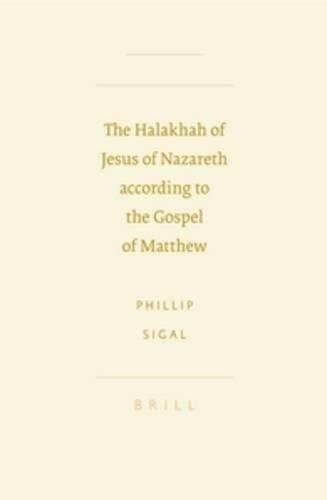Readings Newsletter
Become a Readings Member to make your shopping experience even easier.
Sign in or sign up for free!
You’re not far away from qualifying for FREE standard shipping within Australia
You’ve qualified for FREE standard shipping within Australia
The cart is loading…






This is a republished edition of Sigal’s pioneering work with a new preface by Eugene Fisher of the U.S. Conference of Catholic Bishops and an updating epilogue by Thomas Kazen of the Stockholm School of Theology. Sigal argues that, from a halakhic perspective, Jesus’ teachings on Sabbath and divorce in the Gospel of Matthew use the same methods of interpretation as those of his proto-rabbinic contemporaries. The Jesus of the Gospel of Matthew should thus be seen as a charismatic prophetic first-century proto-rabbi- independent in his halakhah and frequently anticipating later rabbinic positions-rather than as transcending proto-rabbinic halakhah or as an adherent of a particular school. Sigal concludes that, had it not been for the expulsion of Christian Jews from the synagogues after 90 C.E., Jesus could have been remembered as one of the rabbis of the Mishnah and that neither Christology nor halakhah were decisive for the break.
Paperback edition is available from the Society of Biblical Literature (www.sbl-site.org)
$9.00 standard shipping within Australia
FREE standard shipping within Australia for orders over $100.00
Express & International shipping calculated at checkout
This is a republished edition of Sigal’s pioneering work with a new preface by Eugene Fisher of the U.S. Conference of Catholic Bishops and an updating epilogue by Thomas Kazen of the Stockholm School of Theology. Sigal argues that, from a halakhic perspective, Jesus’ teachings on Sabbath and divorce in the Gospel of Matthew use the same methods of interpretation as those of his proto-rabbinic contemporaries. The Jesus of the Gospel of Matthew should thus be seen as a charismatic prophetic first-century proto-rabbi- independent in his halakhah and frequently anticipating later rabbinic positions-rather than as transcending proto-rabbinic halakhah or as an adherent of a particular school. Sigal concludes that, had it not been for the expulsion of Christian Jews from the synagogues after 90 C.E., Jesus could have been remembered as one of the rabbis of the Mishnah and that neither Christology nor halakhah were decisive for the break.
Paperback edition is available from the Society of Biblical Literature (www.sbl-site.org)